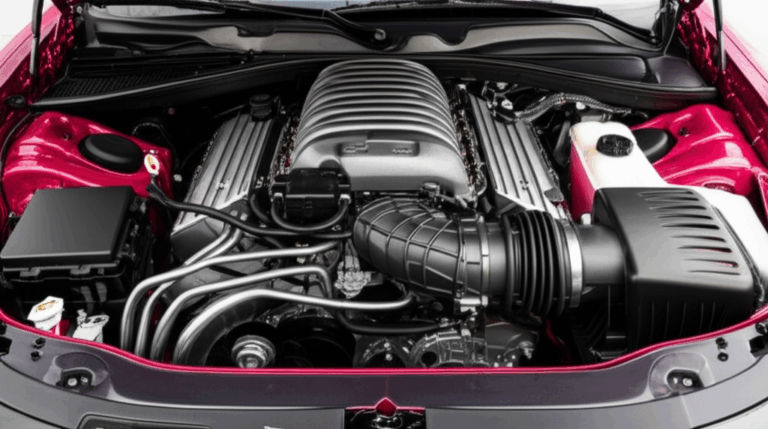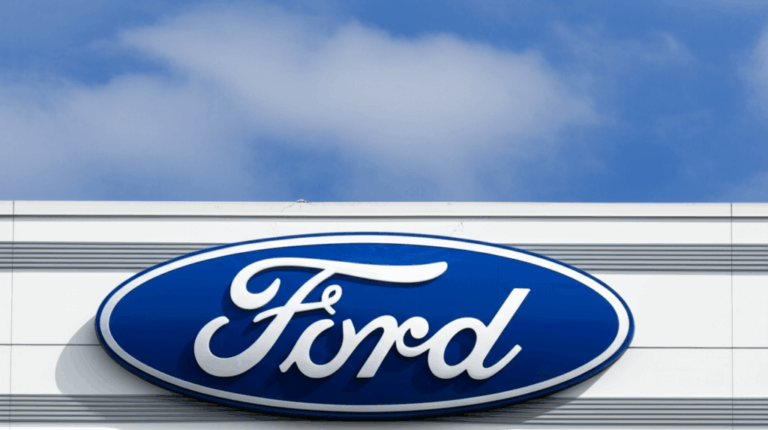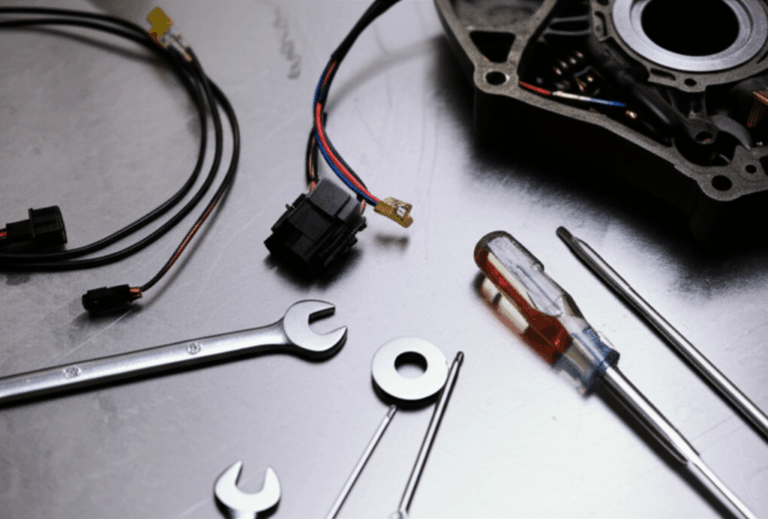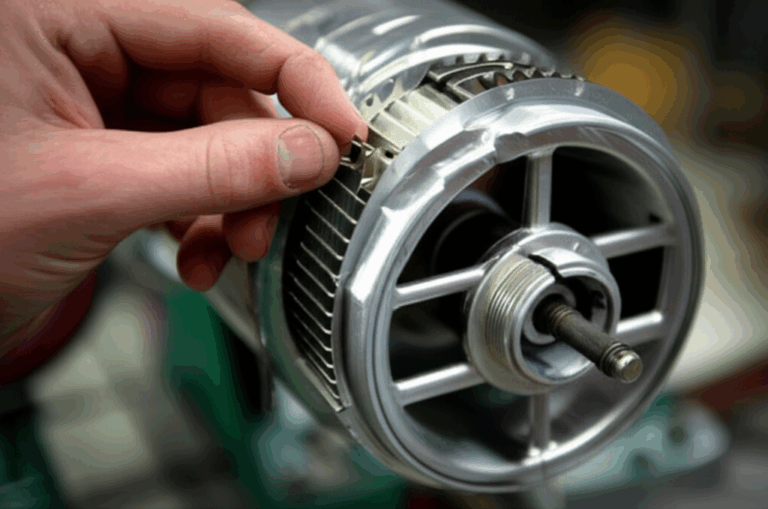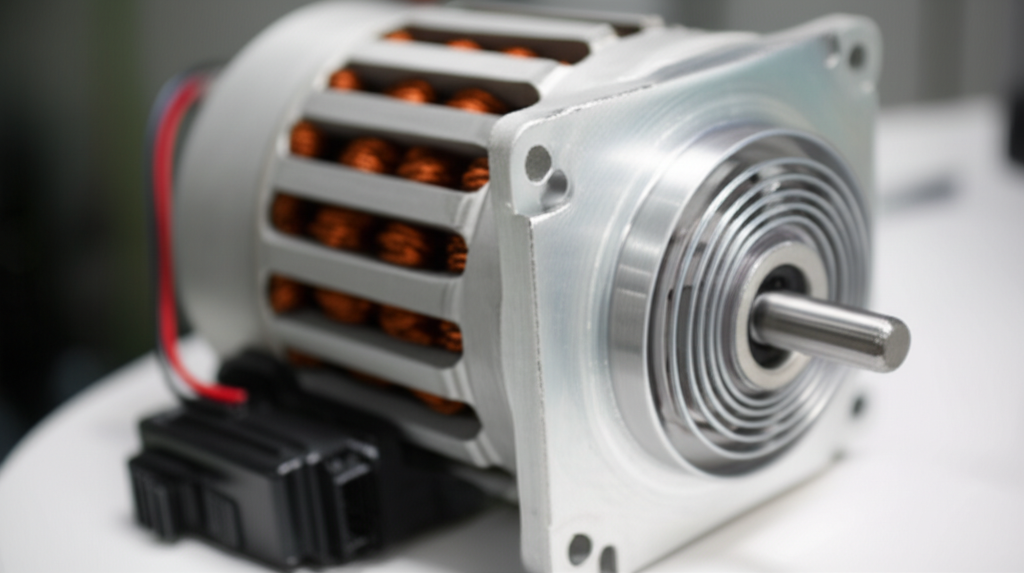
What is an ECM Motor? The Ultimate Guide to Electronically Commutated Motors
Table of Contents
- What is an ECM Motor? The Ultimate Guide to Electronically Commutated Motors
- Why this guide is worth your time
- What is an ECM motor?
- Why should you care about ECM motors?
- How does an ECM motor work?
- What is the difference between ECM and PSC motors?
- Where do you find ECM motors today?
- How much energy can an ECM motor save?
- How do ECM motors boost comfort and indoor air quality?
- Are ECM motors reliable and quiet?
- What should you know before you upgrade?
- Who makes ECM motors and key parts?
- What does the future look like for ECM technology?
- Glossary of ECM words and ideas
- References
- Summary key points
Here’s the deal. You want comfort. You want lower bills. You want gear that just works. An ECM motor can give you that. This guide shows you what it is, how it works, and how it saves you money. I’ll use simple words. I’ll share real results. You’ll walk away ready to act.
Why this guide is worth your time
You’ll learn what an Electronically Commutated Motor (ECM) is and why it beats old motors. You’ll see how it cuts power use by 20% to 80%. You’ll see how it runs quiet, lasts long, and holds steady airflow. You’ll also see how to pick one, where it fits, and who makes the best parts. I’ll also show you how to get payback fast with DOE rules, Energy Star, and rebates.
What is an ECM motor?
Let’s start simple. An ECM motor is a smart, brushless DC motor (BLDC) run by a small computer. It still plugs into AC power. Inside, it turns AC to DC, then uses smart control to spin the shaft. The motor has a stator with wire windings and a rotor with permanent magnets. No brushes. No sparks. Less heat. Long life.
People call it many names. You may hear Electronically Commutated Motor, BLDC, or even Permanent Magnet Synchronous Motor (PMSM). In HVAC, people also say “variable speed blower” or “ECM blower motor.” It’s all the same idea. Smart control. High energy efficiency. Smooth variable speed.
Problem: Old motors waste power. They run one speed. They cycle hard. They make noise. They push too much air or too little. They fail too soon.
Agitate: You pay for that waste every month. Your HVAC runs hot and cold. Your rooms feel off. Your indoor air quality (IAQ) drops. Your furnace or air handler strains.
Solution: An ECM motor fixes that. It sips power. It ramps up and down. It hits the right speed. It holds constant torque or constant airflow when the static pressure changes. Your home feels better. Your bills drop.
Why should you care about ECM motors?
You care because an ECM motor helps in three big ways.
- It cuts power use. You can save 20% to 80% vs a Permanent Split Capacitor (PSC) motor. At low speed, the savings shine. Your utility bills fall.
- It boosts comfort. It holds airflow (CFM) steady. It smooths out rooms. It cuts noise. It keeps filters working longer for better IAQ.
- It lasts longer. No brushes means less wear and tear. The motor runs cool. Life grows long.
I’ve seen families save $150 to $300 a year from fan power alone. I’ve seen stores save over a million dollars by swapping motors in big coolers. The numbers look real. The feel inside the space gets better too.
How does an ECM motor work?
Here’s the simple path.
- AC goes in. A rectifier turns AC to DC.
- The DC feeds a DC bus. The control makes a three-phase output.
- An inverter uses Pulse Width Modulation (PWM) to drive the windings.
- Rotor position sensing tells the control where the rotor sits. This can use Hall effect sensors. It can also use sensorless control with back-EMF.
- The control sends the right pulses to the stator windings. That builds a rotating magnetic field. The permanent magnet rotor chases that field. The shaft spins.
This is called electronic commutation. No brushes. No friction from brushes. Just smart switching. The control can run frequency, voltage, current, or torque control modes. It can hold constant torque or target constant airflow. It can ramp up soft. It can ramp down smooth. That means less start-up stress. That means less noise.
Inside the motor, core materials matter. Good motor efficiency curves come from good steel and good stacks. Designers pick top electrical steel laminations to cut core loss. If you build or spec motors, learn how the choice of electrical steel laminations shapes loss and heat. The right stator core lamination and rotor core lamination lift part-load and full-load efficiency.
What is the difference between ECM and PSC motors?
A PSC motor is simple. It uses a capacitor to start and run. It runs at one fixed speed or maybe two. It wastes power at part load. It slips under changing pressure. It hums.
An ECM motor is smart. It runs many speeds. It holds airflow or torque. It starts soft. It saves power. It runs quiet. It costs more upfront. Yet the ROI is strong.
- PSC: cheap first cost. High power use. Loud. Poor control.
- ECM: higher first cost. Low power use. Quiet. Excellent control.
You pick ECM when you want comfort, savings, and long life. You pick PSC only when first cost rules and you do not care much about energy.
Where do you find ECM motors today?
You find ECM motors across HVAC systems.
- In furnaces and air handlers as blower motors.
- In heat pumps and rooftop units.
- In ventilation systems with exhaust and supply fans.
- In Variable Air Volume (VAV) and Constant Air Volume (CAV) systems.
You also find them in commercial refrigeration. Think case fans in a supermarket. You find them in industrial fans, pumps, and some appliances. Brands like Carrier, Trane, Lennox, and Goodman ship ECM blowers in many models. The DOE Fan Energy Rating (FER) standard pushed this along. Builders of green building technology and Energy Star homes also use them to hit SEER, EER, and AFUE targets.
How much energy can an ECM motor save?
Let’s talk numbers. Here’s a quick table you can use.
| Category | Typical ECM Result | What it Means |
|---|---|---|
| Energy savings vs PSC | 20% to 80% less | Big drop in fan power use |
| Annual savings | $150 to $300 | For many homes from fan use alone |
| Payback | 2 to 5 years | Depends on rates and run hours |
| Low-speed power | 80 to 120 watts at 500 CFM | PSC can draw 400 to 500 watts |
| Noise | 5 to 10 dB quieter | Noticeable sound drop |
These gains show up fast at low speed. Part-load efficiency matters. An ECM motor shines at part load. It can also hold strong full-load efficiency. With smart motor sizing, you can hit the sweet spot on the efficiency curves.
The DOE and EPA push better energy efficiency. You see this in rules and in labels like the energy guide label. You see it in higher SEER and AFUE ratings with ECM blowers. Many utilities offer rebates to speed HVAC efficiency upgrades. Check your area.
How do ECM motors boost comfort and indoor air quality?
It starts with airflow. An ECM can hold CFM steady even when ducts change static pressure. Filters get dirty. Dampers shift. Doors open. The motor sees it and adjusts speed. You get even temps room to room. Fewer hot spots and cold spots.
Next comes noise. ECM motors use soft start and ramp up/down control. Starts feel smooth. Stops feel smooth. You hear less fan roar. You hear less rush of air. Your home feels calm.
Then there is IAQ. You can run the fan low and slow for more hours since it sips power. That means more continuous filtration. More dust and pollen get trapped. You breathe easier.
Want still more comfort? Add zoning systems and a smart thermostat. An ECM motor plays well with these. It can follow signals and adjust RPM and torque to match the load. That is how you get tight control without waste.
Are ECM motors reliable and quiet?
Yes. The brushless design has no brushes to wear out. Lower heat means longer lifespan. The control can run self-diagnostics and show diagnostic codes to guide service. That cuts guesswork.
Noise drops too. ECM motors run quiet by design. At low speed, they can be whisper quiet. Many homes see a 5 to 10 decibel drop vs PSC. That feels like a big change.
What about maintenance? Keep filters clean. Keep ducts sealed. Follow wiring guides. Read the OEM notes. If something goes wrong, many ECMs can flag error codes. Techs can read them and fix fast.
What should you know before you upgrade?
First, check compatibility. Some systems want an OEM ECM motor. Others can use aftermarket ECM motors like X13 or Evergreen. Your tech can help you decide. Some ECMs work as constant torque. Some work as constant airflow. Match the motor to the job.
Second, think about installation and programmable features. Set the speeds right. Set fan profiles to fit your ductwork and home. Use soft start and ramp settings to cut noise and stress.
Third, do a simple ROI check. Add the motor cost. Add any control kit. Estimate your run hours and your electricity rate. Figure your annual savings. Many homes see payback in 2 to 5 years.
Fourth, consider the parts inside the motor. Quality motor core laminations matter. If you design or source motors, look at the motor core laminations and how they control loss, heat, and noise. The build quality at the stator and rotor level drives performance.
Who makes ECM motors and key parts?
You will see names like Regal Beloit (Genteq), Nidec, and Broad-Ocean for motors. Many top HVAC brands use their ECMs in furnaces, air handlers, and heat pumps. You will also see Grundfos on pump ECMs. Mitsubishi Electric uses advanced fans in many systems. Specs use watts, horsepower (HP), torque, and RPM so you can compare.
If you build motors or repair them at scale, you care about cores and steel too. The quality of the stator core lamination and the rotor core lamination can make or break efficiency. So can the stack build and the grade of steel. Some teams source silicon steel laminations and hold tight NEMA standards for loss and thickness. Source well. Build well. Test well.
What does the future look like for ECM technology?
The future looks bright. The DOE standards keep rising. FER rules set a floor for blower systems. Energy Star keeps raising the bar for SEER, EER, and AFUE. Builders want better green building technology. ECM motors help hit those marks.
Smart buildings will push ECMs even more. Motors will link to building management systems. They will use better motor control algorithms. They will improve sensorless control. They will use better inverter tech. You will see smaller drives. You will see better power electronics. You will see better part-load efficiency and still better full-load efficiency.
Designers will lean on better steels and stacks too. The right core lamination stacks keep loss low and DC bus heat under control. The result is long life and low noise.
Glossary of ECM words and ideas
Here are key terms you may hear. I keep the words simple. You can spot them fast when you shop or talk to a tech.
- ECM motor definition and Electronically commutated motor explained: A smart, brushless DC motor with a control board.
- How ECM motors work: AC turns to DC. The inverter and PWM drive the windings. The rotor follows.
- Benefits of ECM motors: Energy savings, quiet, comfort, long life.
- ECM vs PSC motor comparison: ECM saves power and runs smooth. PSC is cheap and simple.
- ECM motor applications: HVAC, fans, pumps, commercial refrigeration, and more.
- Energy efficiency ECM motor: Uses less watts for the same CFM or BTU moved.
- Brushless DC motor (BLDC) and Permanent magnet motor technology: The rotor uses magnets. No brushes.
- Variable speed motor advantages: Matches speed to need. Saves power.
- Constant torque motor operation: Holds torque as pressure changes.
- HVAC ECM motor, Furnace ECM motor, Blower motor ECM, Air handler ECM motor, Heat pump ECM motor: Common places you see ECMs.
- ECM motor pros and cons: Pros are savings and comfort. Cons are higher first cost and more complex electronics.
- ECM motor lifespan: Long due to cool and brushless design.
- ECM motor replacement cost: Higher than PSC. Payback is strong.
- ECM motor repair guide: Use diagnostic codes and OEM steps.
- Smart motor technology: Uses software to set speeds and ramps.
- Direct current motor principles and Alternating current input to ECM: ECM takes AC in and makes DC inside.
- Motor controller functionality: Brains that set speed and torque.
- Commutation process in ECM: Electronic switching replaces brushes.
- Rotor position sensing: Uses Hall effect sensors or sensorless methods like back-EMF sensing.
- Stator windings function: Coils that make the rotating field.
- Magnetic field generation: Field pulls the rotor around.
- Electronic control module in motor: The board that runs the show.
- Programmable motor features and Programmable fan speed settings: Set custom speeds and modes.
- Quiet operation ECM motor and ECM motor noise level: Lower noise than PSC.
- Reduced energy consumption and Cost savings with ECM: Lower bills and fast ROI.
- Improved indoor air quality (IAQ) and Enhanced comfort with ECM: Better airflow and filtration.
- Motor speed control mechanisms: Frequency control, Voltage control, Current control, Torque control.
- Fixed speed motor comparison: ECM beats fixed speed on comfort and savings.
- ECM motor troubleshooting and Common ECM motor problems: Codes, wiring, control board checks.
- Is an ECM motor worth it?: For most homes the answer is yes.
- Government regulations energy efficiency and Department of Energy (DOE) standards: Rules that push efficiency.
- SEER rating improvement, AFUE rating impact, EER: Ratings that can rise with ECM blowers.
- Variable air volume (VAV) systems and Constant air volume (CAV) systems: ECM fits both.
- ECM motor types: Constant torque, Constant airflow, X13, Evergreen.
- X13 motor explained: A popular constant torque ECM used in many systems.
- Evergreen motor technology: A retrofit ECM option.
- GE ECM motor and Regal Beloit ECM (Genteq): Common makers.
- OEM ECM motors and Aftermarket ECM motors: Choose based on system and goals.
- Soft start motor function and Ramp up/down speed control: Smooth starts and stops.
- Reduced wear and tear ECM: Less stress on parts and belts.
- Diagnostic codes ECM motor: Help with service.
- Motor control algorithm: The math that sets speed and torque.
- Sensorless control ECM and Hall effect sensors in ECM: Two ways to track rotor.
- Back-EMF sensing: Reads the motor’s feedback voltage to track speed.
- Power electronics for motors and Inverter drive technology: Hardware that makes the three-phase output.
- Rectifier circuit in ECM and DC bus voltage: AC to DC then smooth DC to the inverter.
- Pulse width modulation (PWM) motor: Switches fast to control current.
- Frequency control motor, Voltage control motor, Current control motor, Torque control motor: Four ways to run.
- Motor efficiency curves, Part-load efficiency ECM, Full-load efficiency ECM: Show how a motor uses power at each load.
- Motor sizing ECM: Pick the right size for the job.
- ECM motor testing: Check noise, heat, and power draw.
- Capacitor-start motor comparison, Split-phase motor alternatives, Shaded-pole motor upgrade, AC induction motor vs ECM, DC brushed motor replacement: ECM wins on most counts.
- Commercial refrigeration ECM, Industrial fan ECM, Pump ECM motor, Ventilation fan ECM: Many uses beyond HVAC.
- ECM motor advantages over induction motors and ECM motor disadvantages: Pros are savings and control. Cons are first cost and electronics.
- HVAC blower motor replacement guide: Steps for a safe swap.
- Energy Star rating motors and Green building technology ECM: Programs that reward ECMs.
- Return on investment (ROI) ECM: Money back from energy savings.
- Maintenance of ECM motors: Keep filters clean. Follow OEM steps.
- Wiring ECM motor: Follow the diagram. Use the right gauge.
- ECM motor noise level: Lower than PSC in most cases.
- Environmental impact ECM and Sustainable technology motors: Less power, less carbon.
- Future of motor technology and Energy guide label motors: ECM drives the future.
- HVAC efficiency upgrades and Residential ECM motors: Big gains at home.
Now a quick pass at common entities and ratings you may see on specs and labels:
- Direct Current (DC), Alternating Current (AC), Watts, Horsepower (HP), Torque, RPM (Revolutions Per Minute).
- Thermostat, Zoning Systems, and Ductwork work with ECMs for comfort.
- Indoor Air Quality (IAQ) and Noise Reduction improve with ECMs.
- Department of Energy (DOE), Energy Star, and Environmental Protection Agency (EPA) set and guide standards.
- SEER, AFUE, EER, and BTU show system efficiency and capacity.
- Programmable Features and Diagnostic Codes come built in on many ECMs.
- Makers and partners: Regal Beloit (Genteq), Nidec, Broad-Ocean, Carrier, Trane, Lennox, Goodman, X13 Motor, Evergreen Motor, Grundfos (Pumps), Mitsubishi Electric, National Electrical Manufacturers Association (NEMA).
References
- U.S. Department of Energy (DOE). Fan Energy Rating (FER) standards and HVAC efficiency guidance.
- Energy Star. Guidance on energy-efficient HVAC equipment and ratings.
- ASHRAE publications. Articles on fan control, ECM adoption, and IAQ.
- Manufacturer data sheets. Genteq, Nidec, Broad-Ocean, and OEM HVAC brands.
- Utility rebate program pages. Regional offers for ECM blower upgrades.
PAS in action: a short story
Problem: A homeowner ran a PSC blower. Summer bills spiked. Bedrooms felt hot. The fan roared at night.
Agitate: They tried closing vents. It got worse. The fan pulled hard and still missed airflow. Kids could not sleep.
Solution: The tech swapped in a constant airflow ECM. They set speeds with programmable features. The motor used soft start and ramp down. The home got even temps. The fan ran near 100 watts at night. The bill dropped. The kids slept.
Now another case. A supermarket replaced 5,000 PSC fans in coolers with ECMs. They saved over $1 million a year. They also cut service calls. Why. Brushless design and cool running parts. It paid for itself fast.
Build and materials matter
Inside any motor, the metal stack sets the stage. Good laminations cut core loss. They also cut heat and noise. If you design BLDC or ECM motors, study the bldc stator core options and the grain of the steel. The choice of steel grade and the way you stack and bind the core can lift your efficiency at part load and full load.
Engineers often pick silicon steel laminations with tight thickness control. They care about slot shape and tooth width in the stator. They match it with the right rotor pole count and magnet grade. They might also use transformer lamination core ideas in power supplies and drives. Core design is not just theory. It shows up on the light bill.
Simple buying tips
- Check your model. Match OEM or pick a proven aftermarket like X13 or Evergreen.
- Decide if you need constant torque or constant airflow.
- Look for clear diagnostic codes and a good wiring guide.
- Ask about DOE and utility rebates. They help pay for the upgrade.
- Compare watts at key CFM points. Check sound ratings in dB.
- If you are a builder or engineer, source quality cores like stator core lamination and rotor core lamination. The core sets the ceiling for your motor.
FAQ
Q: Is an ECM motor worth it?
A: In most cases yes. You save energy. You gain comfort. Payback often lands in 2 to 5 years.
Q: Will it work with my old furnace?
A: Many systems can use an aftermarket ECM. Some need an OEM kit. Ask a licensed tech.
Q: Is an ECM motor noisy?
A: No. It is often 5 to 10 dB quieter than a PSC. Soft starts help a lot.
Q: What fails on an ECM?
A: The control board can fail if heat or spikes hit it. Keep filters clean. Keep airflow healthy. Use surge protection if needed.
Q: Does an ECM help SEER and AFUE?
A: Yes. Many systems see better SEER, EER, and AFUE when the blower shifts to ECM.
Summary key points
- An ECM motor is a brushless DC motor with smart control. It turns AC to DC and uses PWM to run the windings.
- It saves 20% to 80% vs PSC. It shines at part load. It often pays back in 2 to 5 years.
- It boosts comfort with steady airflow, soft start, and low noise.
- It is reliable. It runs cool. It gives diagnostic codes to help techs.
- You find ECMs in furnaces, air handlers, heat pumps, VAV, CAV, refrigeration, pumps, and fans.
- Check DOE rules, Energy Star, and rebates. They can cut your cost.
- For builders and engineers, core quality matters. Pick strong electrical steel laminations and tight stacks. Consider core lamination stacks to hit your efficiency goals.
- Brands like Genteq, Nidec, and Broad-Ocean lead in ECM motors. HVAC brands like Carrier, Trane, Lennox, and Goodman use them widely.
- The future is smart and efficient. ECM motors will drive better IAQ, lower carbon footprint, and higher comfort in homes and buildings.

